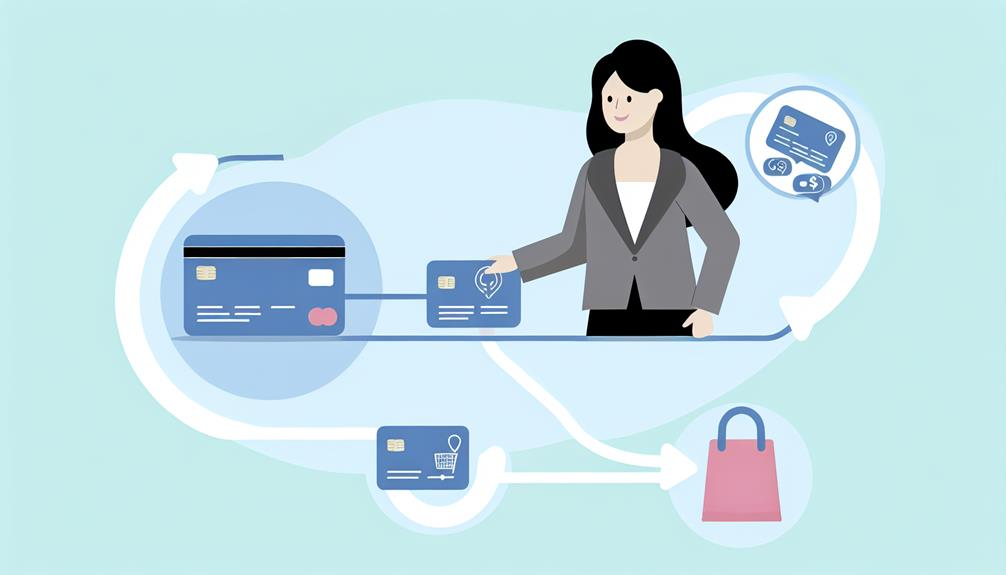Have you ever heard the saying, ‘The customer is always right’? Well, while that may not always hold true, it’s no secret that customer satisfaction is essential for the success of any business.
In today’s competitive market, you need to go above and beyond to meet and exceed customer expectations. But how can you do that?
In this discussion, we will explore effective strategies that can help you elevate customer satisfaction and improve the overall customer experience. And trust me, these strategies are worth exploring if you want to stay ahead of the game.
Understanding Customer Needs

To improve customer experience, it’s crucial for you to understand their needs. Customer empathy and user-centric design are key factors in achieving this understanding. When you put yourself in your customer’s shoes, you can truly grasp their pain points, desires, and expectations. This empathy allows you to develop products and services that cater to their specific needs.
User-centric design takes this understanding a step further. It involves designing products and experiences with the end user in mind, ensuring that they’re intuitive, efficient, and enjoyable. By adopting this approach, you’re prioritizing the needs and preferences of your customers throughout the entire design process. This not only enhances their experience but also increases their satisfaction and loyalty towards your brand.
To gain a deeper understanding of your customers, consider conducting surveys, interviews, or focus groups. Engage with them on social media, read and respond to their feedback, and pay attention to their behaviors and preferences. By actively listening and observing, you can uncover valuable insights that will help you tailor your products and services to meet their needs more effectively.
Enhancing Communication Channels
Improving customer experience begins by enhancing your communication channels. Effective communication is crucial in building strong relationships with your customers and providing them with a satisfying experience. To achieve this, consider adopting an omnichannel approach that allows customers to engage with your brand through various channels seamlessly.
An omnichannel approach means integrating all your communication channels, such as phone, email, chat, and social media, into a unified system. This enables customers to interact with your business using their preferred channel, ensuring convenience and flexibility. By providing a consistent experience across all channels, you can enhance customer engagement and increase their satisfaction.
To enhance your communication channels, start by identifying the channels that your customers prefer. Conduct surveys or analyze customer data to gain insights into their communication preferences. Once you have this information, invest in the necessary technology and tools to support these channels effectively.
Another important aspect of enhancing communication channels is training your team to provide consistent and personalized support across all channels. Your customer service representatives should be well-versed in using different communication channels and equipped with the knowledge and skills to provide timely and relevant assistance.
Providing Personalized Experiences

Enhancing communication channels is just the first step in creating a personalized experience for your customers. To truly provide tailored solutions and customized interactions, you need to go beyond basic communication methods.
One effective way to personalize experiences is by using customer data. By collecting and analyzing data on your customers’ preferences, behaviors, and past interactions, you can gain valuable insights into their needs and preferences. This data can then be used to tailor your products, services, and communications to meet their specific requirements. For example, you can send targeted emails with personalized recommendations based on their purchase history or provide customized offers and discounts.
Another approach to providing personalized experiences is by offering self-service options. By empowering customers to find solutions on their own, you allow them to personalize their interactions with your brand. This can include providing online FAQs, knowledge bases, or chatbots that can guide customers through common issues.
Moreover, personalization can be achieved through proactive communication. Anticipating customers’ needs and reaching out to them before they even realize they’ve a problem can greatly enhance their experience. This can be done through automated messages, proactive customer support, or even personalized product suggestions based on their browsing history or previous purchases.
Streamlining the Purchasing Process
One way to make the purchasing process smoother and more efficient is by simplifying the steps involved. By implementing a simplified checkout process, you can reduce the time and effort required for customers to complete their orders. Start by eliminating unnecessary fields and information requirements during the checkout process. Keep it simple and ask only for essential details like name, address, and payment information. Additionally, consider offering guest checkout options to avoid the need for customers to create an account. This not only saves time but also reduces friction for first-time buyers.
Efficient ordering is another key aspect of streamlining the purchasing process. Provide clear and intuitive navigation on your website or app, ensuring that customers can easily find the products they’re looking for. Implement features like search filters, sorting options, and related product recommendations to enhance the browsing experience. Furthermore, optimize your website or app for speed to minimize loading times and prevent frustration.
Integrating a seamless payment gateway that supports various payment methods can also enhance the purchasing experience. Offering options such as credit cards, digital wallets, and bank transfers gives customers the flexibility to choose their preferred payment method.
Lastly, ensure that your inventory management system is up to date and accurate, preventing any disappointments caused by out-of-stock items. By simplifying the checkout process and implementing efficient ordering strategies, you can elevate customer satisfaction and improve the overall customer experience.
Implementing Feedback Mechanisms

To gather valuable insights from your customers and continuously improve their experience, it’s essential to implement effective feedback mechanisms.
One way to do this is through real-time monitoring. By tracking customer interactions and behaviors in real-time, you can quickly identify areas of improvement and address them promptly. Real-time monitoring allows you to stay informed about what your customers are experiencing, enabling you to make timely adjustments to enhance their satisfaction.
Another valuable feedback mechanism is customer surveys. Surveys provide a direct line of communication with your customers, allowing them to express their opinions, preferences, and concerns. By regularly collecting feedback through surveys, you can gain a deeper understanding of your customers’ needs and expectations. This information enables you to make informed decisions and implement changes that align with your customers’ desires.
When implementing feedback mechanisms, it’s crucial to ensure that they’re user-friendly and accessible. Make it easy for your customers to provide feedback by offering multiple channels, such as online forms, email, or even phone calls. Additionally, consider incorporating incentives, such as discounts or exclusive offers, to encourage participation in surveys and feedback initiatives.
Frequently Asked Questions
How Can Businesses Effectively Measure and Track Customer Satisfaction Levels?
To effectively measure and track customer satisfaction levels, businesses should focus on customer feedback analysis and implement the Net Promoter Score (NPS). These strategies allow you to gather and analyze data, helping you improve customer experience and elevate satisfaction levels.
What Are Some Common Challenges Businesses Face When Trying to Improve Customer Experience?
When businesses try to improve customer experience, they often face common challenges. Employee engagement and customer feedback are crucial, but obstacles like lack of resources and resistance to change can hinder progress.

Are There Any Specific Industries or Sectors That Can Benefit the Most From Implementing Customer Satisfaction Strategies?
In the hospitality industry and e-commerce sector, implementing customer satisfaction strategies can greatly benefit your business. By focusing on improving customer experience, you can enhance loyalty and drive success.
What Role Does Employee Training and Development Play in Enhancing Customer Satisfaction?
Employee training and development are crucial in enhancing customer satisfaction. When employees are engaged and well-trained, they are better equipped to provide exceptional service, which in turn leads to increased customer loyalty.
How Can Businesses Effectively Utilize Technology and Data Analytics to Improve Customer Experience?
You can effectively utilize technology and data analytics to improve customer experience. By harnessing the power of these tools, businesses can gain valuable insights, personalize interactions, and streamline processes, ultimately enhancing customer satisfaction.
